Photos: Early Dinosaur Cousin Looked Like a Croc
Dino Cousin
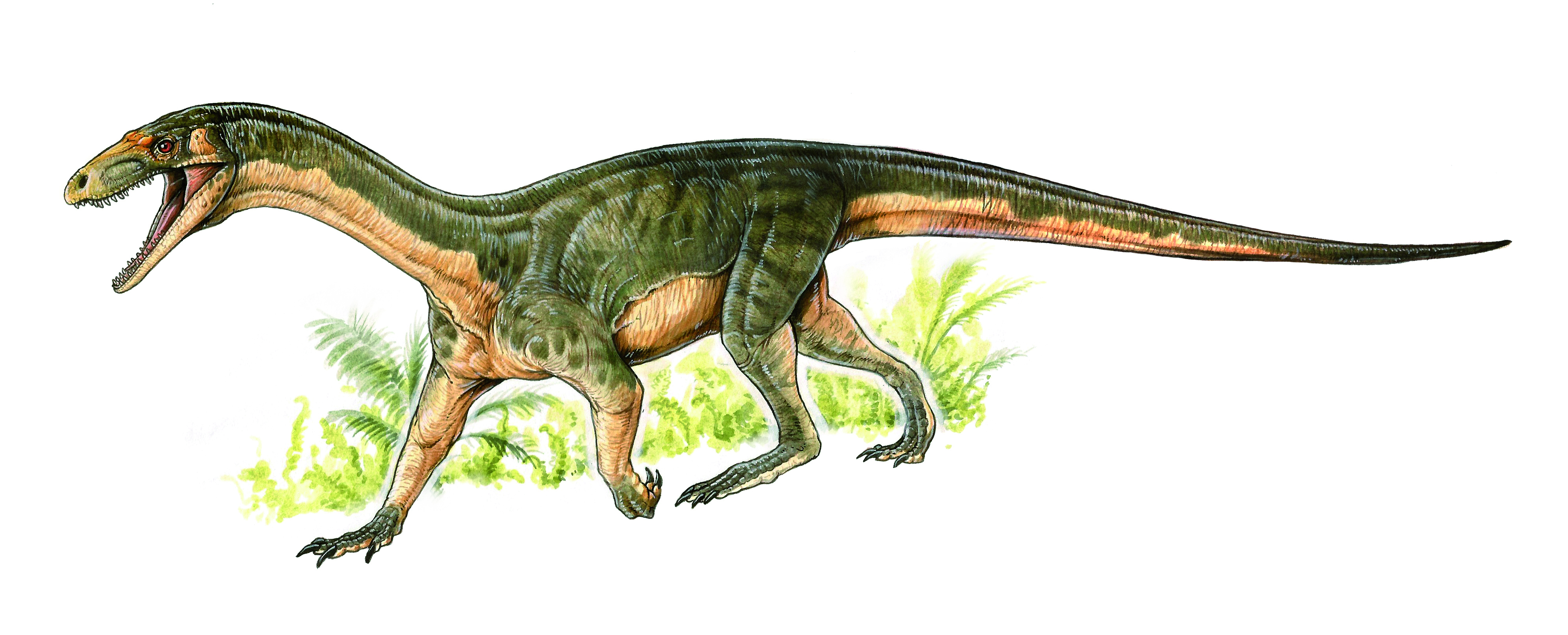
About 245 million years ago, a strange creature walked around what was then a part of the supercontinent Pangaea, but is now modern-day Tanzania. This creature, named Teleocrater rhadinus, was an early relative of dinosaurs. For years, researchers knew that this missing relative existed, but they had no idea what it looked like. Some thought it might look like a small dinosaur, perhaps a chicken-size reptile that walked on its hind legs.
The discovery of T. rhadinus upended this idea. The reptile, which resembled a modern monitor lizard, did show dinosaur-like growth, with a rapid growth spurt early in life, according to an analysis of the growth rings in the animal's bones. But it walked on all four legs and its ankles were surprisingly crocodilian-like, the researchers found.
Here are some wild facts about T. rhadinus, which predated dinosaurs by as much as 14 million years. [Read the Full Story on Teleocrater rhadinus]
Lunchtime
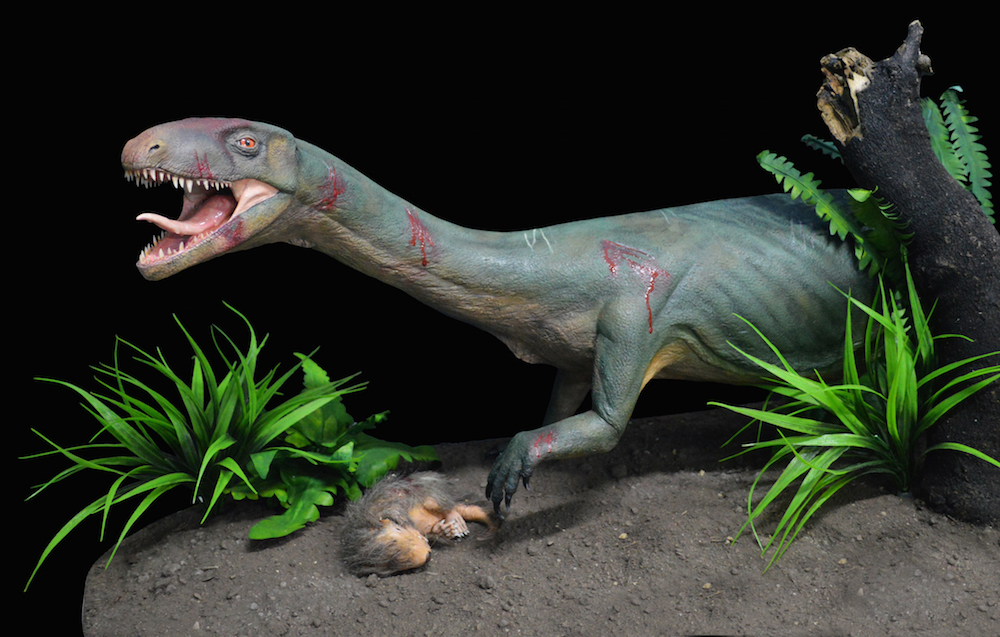
This model shows the newly identified species, Teleocrater rhadinus, preying on a young cynodont, a distant relative of mammals. T. rhadinus was a carnivorous reptile and an early cousin (not an ancestor) of dinosaurs.
Munch, munch

An illustration showing T. rhadinus chowing down on the cynodont. The toothy carnivore measured between 7 and 10 feet (2 and 3 meters) long and sported a lengthy neck and tail.
Ancient feast
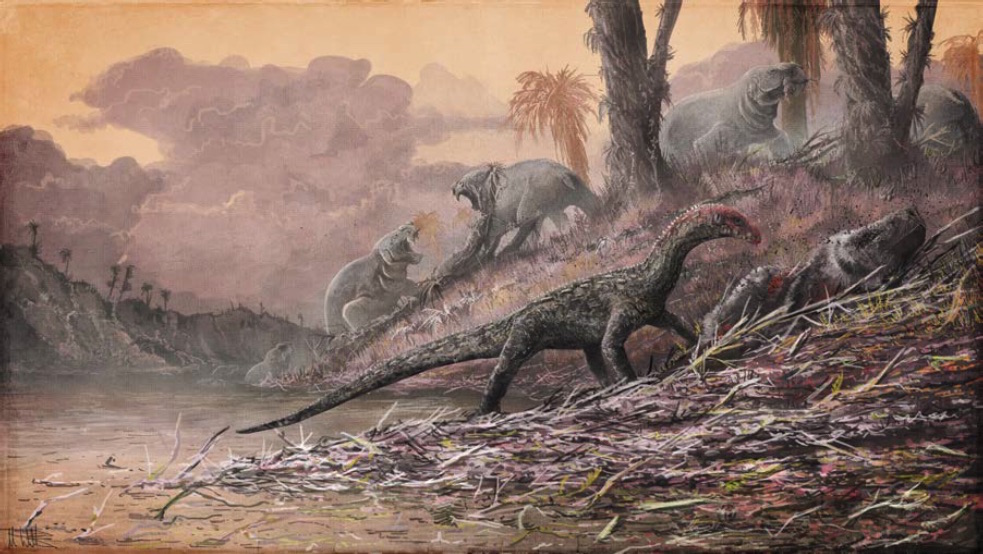
A drawing of T. rhadinus scarfing down Cynognathus, a genus of cynodont that lived in the early and middle Triassic period. The large therapsid (a type of cynodont) Dolichuranus, a plant-eating creature with tusks, is seen in the background.
Family tree
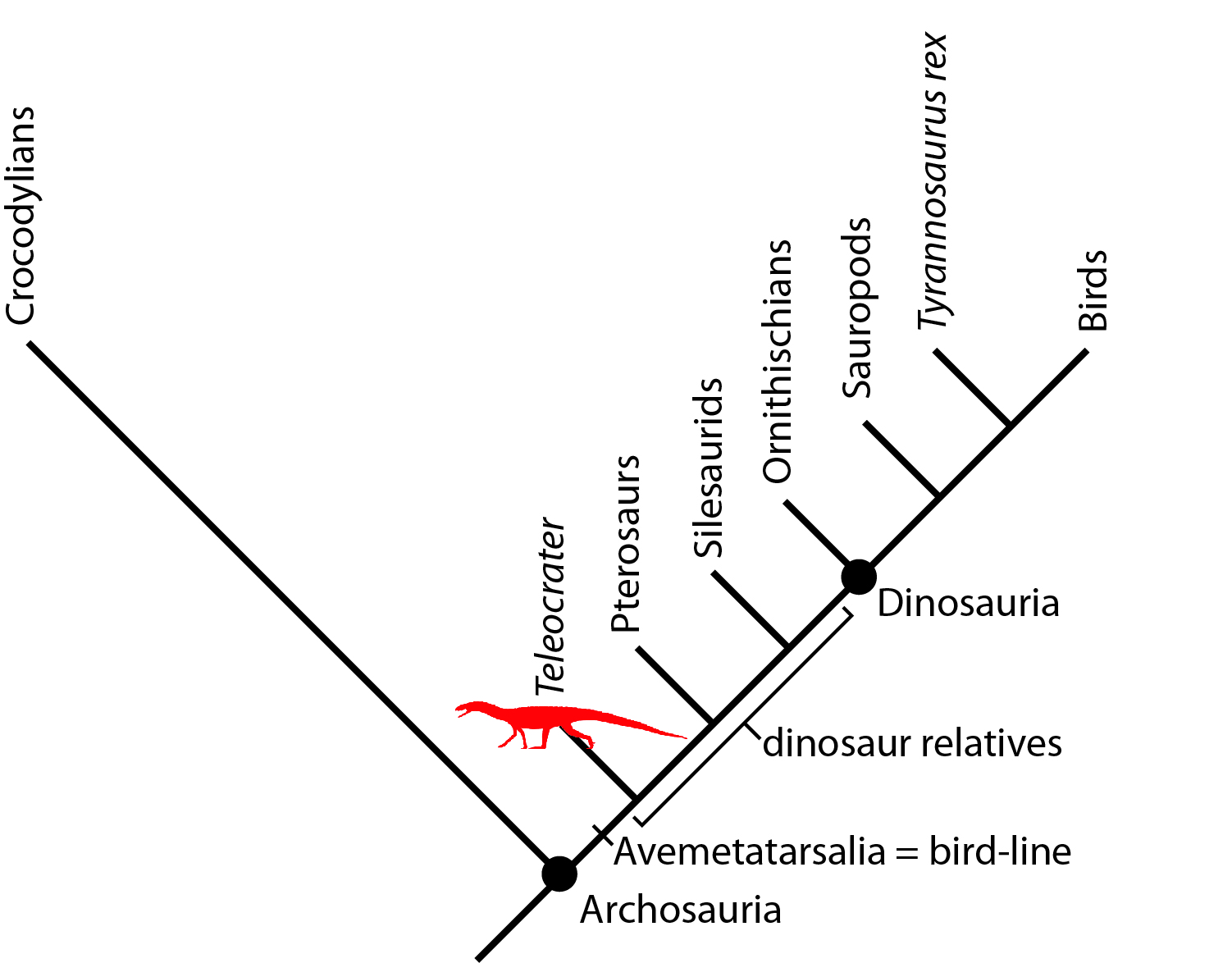
This tree shows the archosaurs, a group that includes crocodilians (crocodiles, alligators and their cousins), dinosaurs, pterosaurs and birds. The newfound Teleocrater (in red) is the earliest known relative on the bird side of the family tree.
Alan Charig

he paleontologist F. Rex Parrington first unearthed T. rhadinus in Tanzania in 1933. Alan Charig (1927-1997), the former curator of fossil reptiles, amphibians and birds at the Natural History Museum in London, studied T. rhadinus in the 1950s. Charig (pictured here) never published a study on the creature, but he did come up with its name: Teleocrater rhadinus.
Strolling around

This illustration shows that T. rhadinus walked on all fours and had crocodilian-like ankles, which hinge up and down and from side to side. In contrast, a bird-like ankle hinges only up and down.
T. rhadinus's ankles suggest that the common ancestor of crocodilians and birds had a crocodilian-like ankle, the researchers said.
Sign up for the Live Science daily newsletter now
Get the world’s most fascinating discoveries delivered straight to your inbox.
Digging away
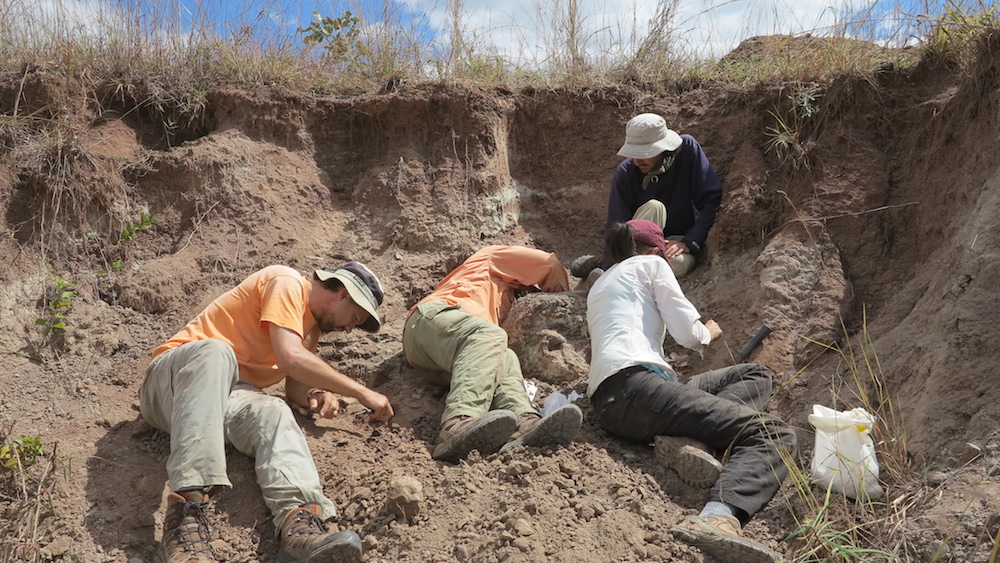
In 2015, researchers uncovered at least three new T. rhadinus specimens in southern Tanzania. Study co-researchers Christian Sidor (left), Sterling Nesbitt (middle left), Kenneth Angielczyk (upper right) and Michelle Stocker (lower right) help with the excavations.
[Read the Full Story on Teleocrater rhadinus]
Hats required
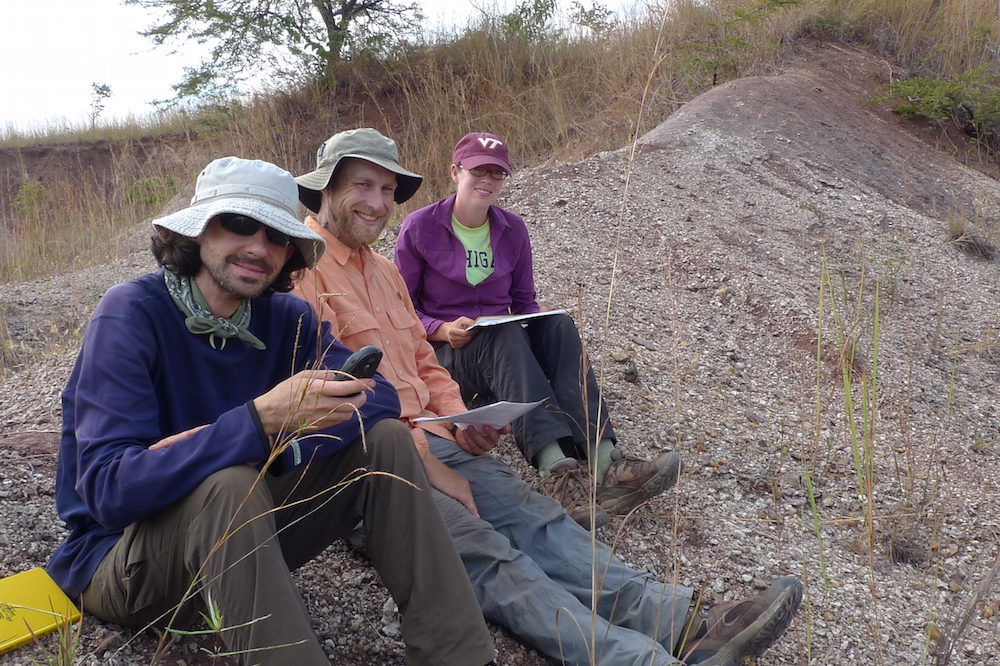
Three of the study's co-researchers — Ken Angielczyk, an associate curator of fossil mammals at the Field Museum in Chicago; Sterling Nesbitt, an assistant professor of geosciences at Virginia Tech; and Michelle Stocker, an assistant professor of geosciences at Virginia Tech — are pictured.
Moments after this picture was taken, study co-researcher Roger Smith, a South African paleontologist, found the first Teleocrater specimen of the 2015 dig.
Teleocrater's skeleton

A reconstruction of T. rhadinus' skeleton. The scale bar is 10 inches (25 centimeters).
Plaster bandages
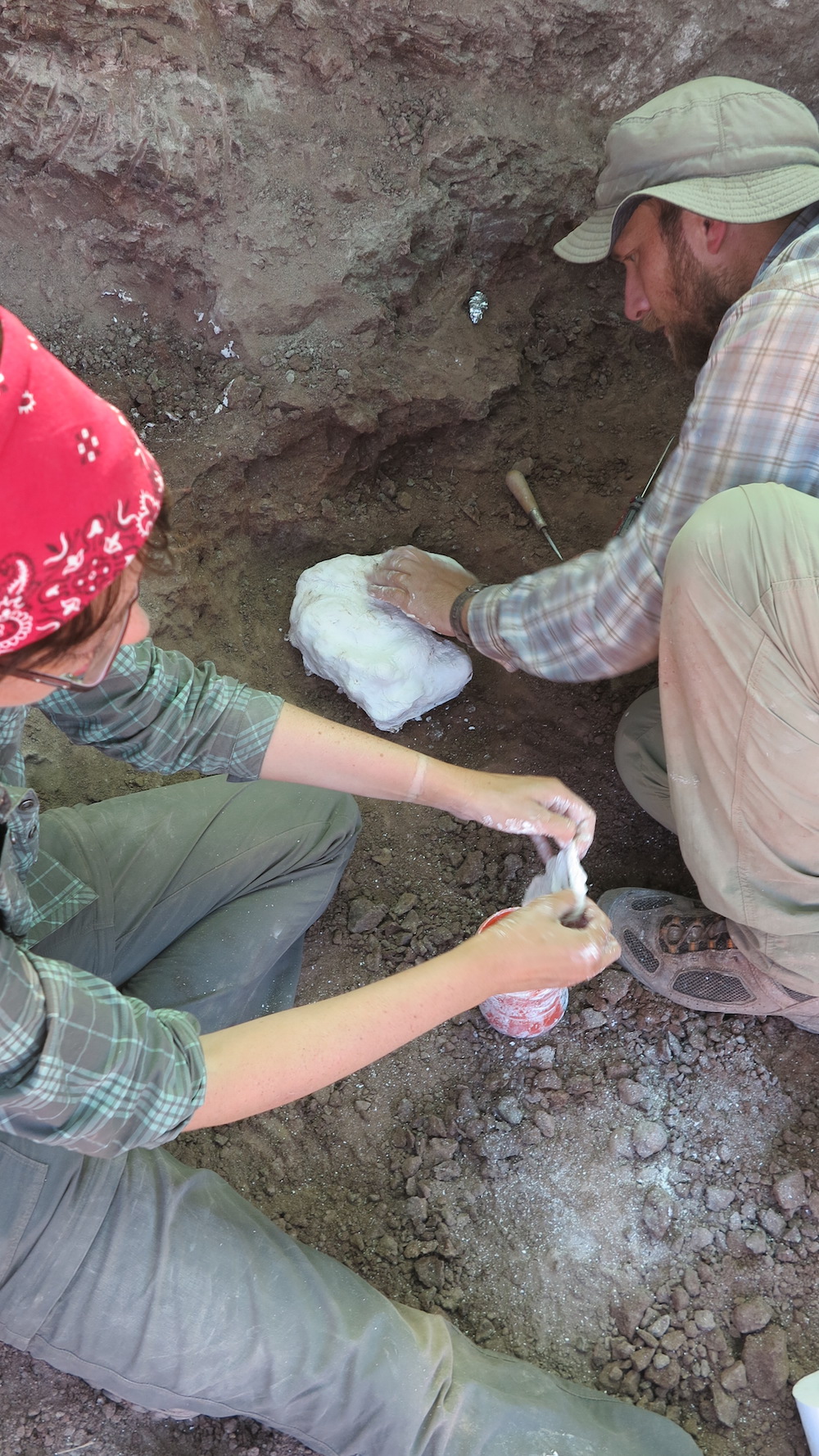
Researchers Michelle Stocker (left) and Sterling Nesbitt (right) wrap T. rhadinus's fossilized bones in plaster to protect them from the elements.

Laura is the archaeology and Life's Little Mysteries editor at Live Science. She also reports on general science, including paleontology. Her work has appeared in The New York Times, Scholastic, Popular Science and Spectrum, a site on autism research. She has won multiple awards from the Society of Professional Journalists and the Washington Newspaper Publishers Association for her reporting at a weekly newspaper near Seattle. Laura holds a bachelor's degree in English literature and psychology from Washington University in St. Louis and a master's degree in science writing from NYU.










